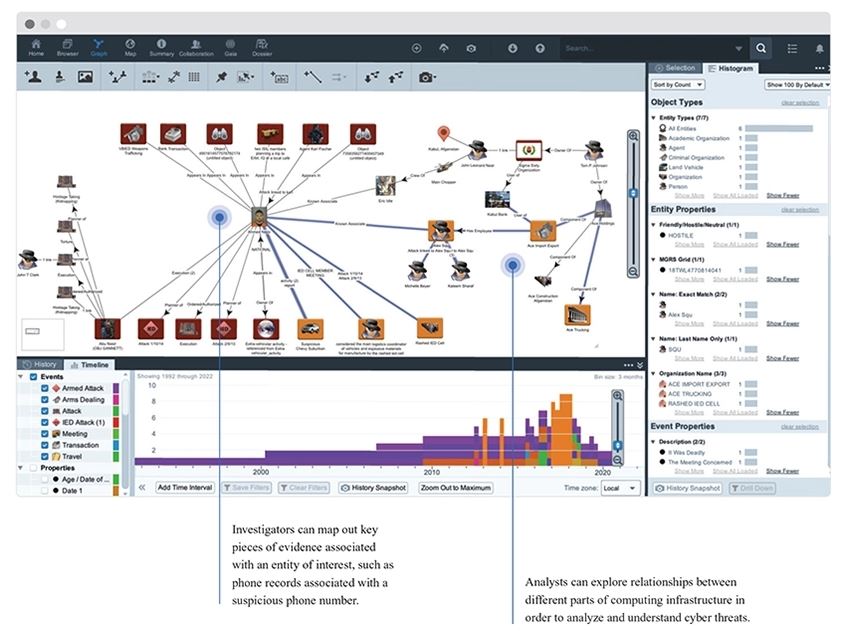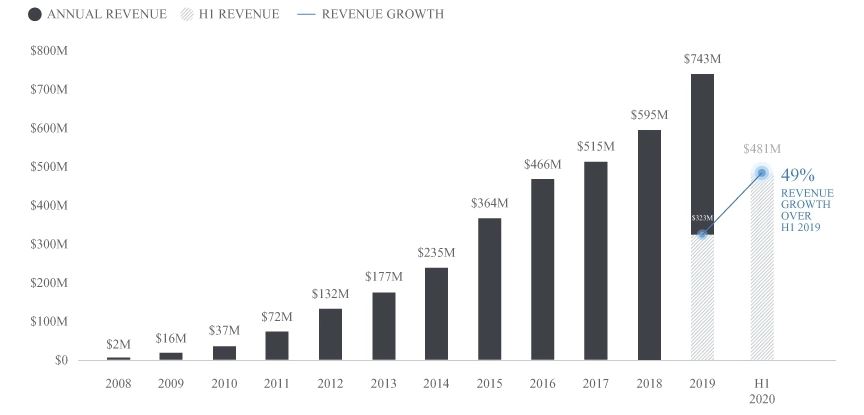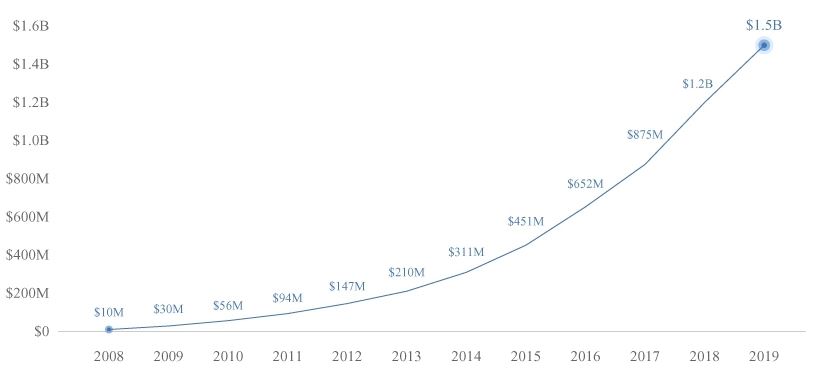Palantir Technologies was founded in 2003 in Palo Alto, California by PayPal Holdings, Inc. (NASDAQ: PYPL) co-founder & billionaire investor Peter Thiel and Dr. Alex Karp, Palantir’s current chief executive.
Under the capital structure, Palantir will have three classes of common stock with the founders (Alexander Karp, Stephen Cohen, and Peter Thiel) establishing a voting trust and holding all of the Class F shares that will effectively allow the trust control the Company.
Palantir provides technology and services that build enterprise data platforms for companies, governments and organizations with highly complex and sensitive data environments. The company also offers a suite of software applications for integrating, visualizing, and analyzing the data.
According to the Company’s website, Palantir believes in “augmenting human intelligence, not replacing it.”
DIAGRAM 1: Software Provides a Whiteboard-like Interface to Explore, Visualize, and Interact with the Data

Verticals include defense and intelligence agencies, including the U.S. Central Intelligence Agency (“CIA”), biotech/pharma, energy, financial services, healthcare, manufacturing and transportation sectors.
Palantir is currently in the process of raising $961 million with $549 million already committed. This round of financing includes a $500 million (JPY 54 billion) investment from Sompo Holdings, Inc. (TSE: 8630), headquartered in Tokyo, Japan, and a $50 million (JPY 5.4 billion) investment from Fujitsu Limited (TSE:6702), also headquartered in Tokyo, Japan.
According to various sources, during their last round of financing in 2015/2016, Palantir reached a $20 billion valuation but, in recent years, existing shareholders have sold shares at a lower valuation.
Palantir expects revenue to reach $1 billion in 2020 from $743 million in 2019 and $595 million in 2018. Gross margins in 2019 were 67%. In 2019, the Company incurred a net loss of $580 million, or a net loss of $334 million if excluding stock-based compensation. For the first half of 2020, their net loss decreased to $165 million, or a net income of $17 million when excluding stock-based compensation.
GRAPH 1: Historical Revenue

The Company sees itself a little different from other competitors in Silicon Valley when it stated,
“Our company was founded in Silicon Valley. But we seem to share fewer and fewer of the technology sector’s values and commitments. From the start, we have repeatedly turned down opportunities to sell, collect, or mine data. Other technology companies, including some of the largest in the world, have built their entire businesses on doing just that. … For many consumer internet companies, our thoughts and inclinations, behaviors and browsing habits, are the product for sale. The slogans and marketing of many of the Valley’s largest technology firms attempt to obscure this simple fact.”
In the first half of 2020, 125 customers used their platforms, across 36 industries, and in more than 150 countries. However, Palantir does not work with the Chinese communist party and has chosen not to host their platforms in China, which they admit might limit their growth prospects. The Company’s leadership believes that,
“Working with the Chinese communist party is inconsistent with our culture and mission. We do not consider any sales opportunities with the Chinese communist party, do not host our platforms in China, and impose limitations on access to our platforms in China in order to protect our intellectual property, to promote respect for and defend privacy and civil liberties protections, and to promote data security.”
Through December 31, 2019, Palantir had invested $1.5 billion in research and development since 2008 and the Company plans to continue investing in R&D to further develop their software platforms and services.
GRAPH 2: Cumulative Spending on R&D





